Syn.: Apinus flexilis (E. James) Rydb., Pinus lambertiana var. brevifolia Hook., Pinus novaemexicana P. Landry
Family: Pinaceae Lindl.
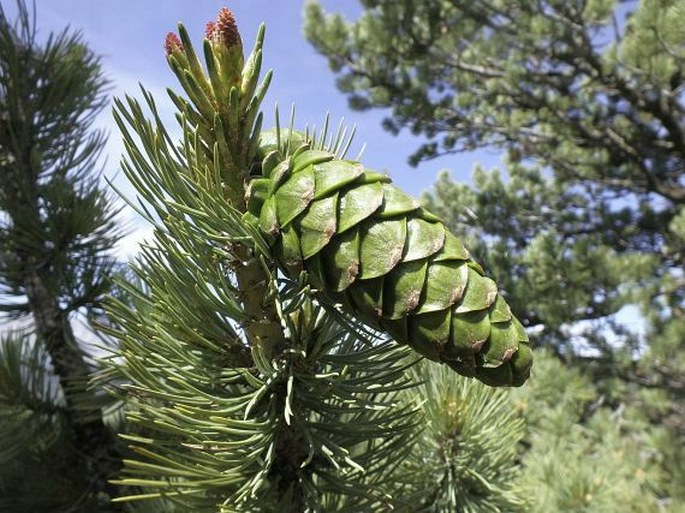
Distribution: North American species occurring mainly along the Rocky Mountains from British Columbia and Alberta to California, Arizona and New Mexico.
Ecology: It grows in high montane forests, often at timberline, at elevations from (1000–)1500 up to 3600 m.
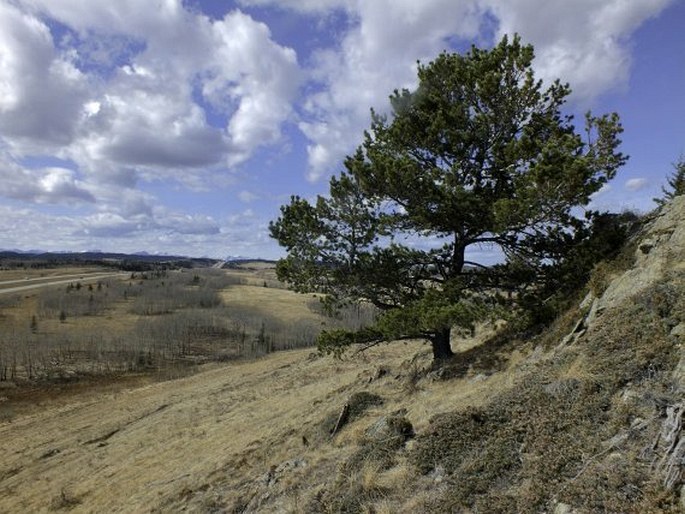
Description: Tree, 20–30 m tall, with conical or irregular columnar crown. Bark of young trees is gray, with age reddish-brown, thick, very rough with wide scaly plates. Needles 5 per fascicle, 3–7 cm long, spreading to upcurved and ascending. Pollen cones ellipsoid-cylindric, 15 mm long, pale red or yellow. Cones 6–15 cm long, short-stalked, cylindrical-ovoid, straw-colored, apophyses with incurved to outcurved apices, upright or outspreading when cones dry and open. Seeds are 7–15 mm long, wingless.
Note: Mature trees may exceed 1000 years of age. The species is cold and drought resistant. Cones open in the fall and seeds are dispersed by small mammals as squirrels, and by birds, mainly by Clark`s Nutcracker (Nucifraga columbiana) and in the south by Pinyon Jay (Gymnorhinus cyanocephalus). If the seeds are not preyed upon, they are released but cannot be dispersed by wind due to their lack of the wing. Minimum seed bearing age ranges from 20-40 years and there are 2–4 years between large crops.

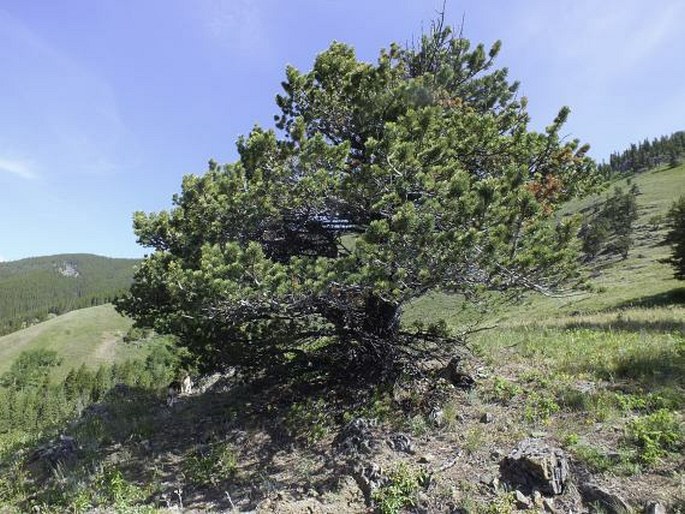
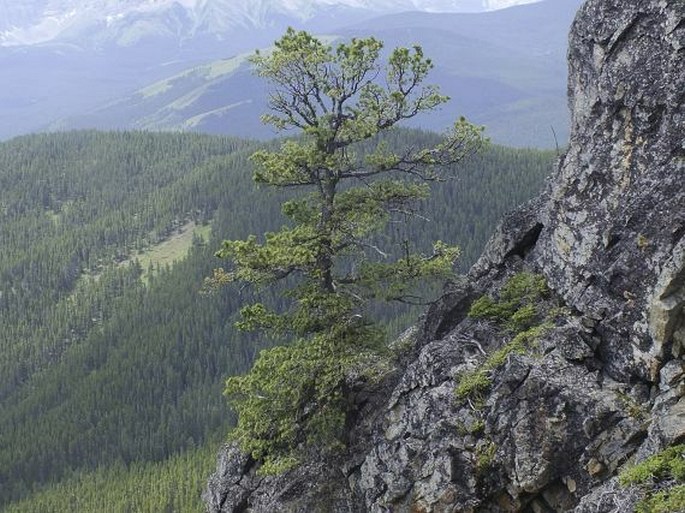

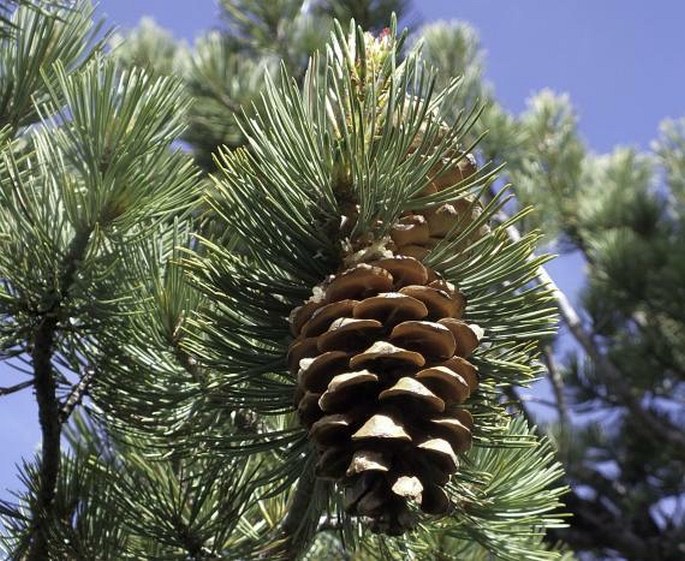
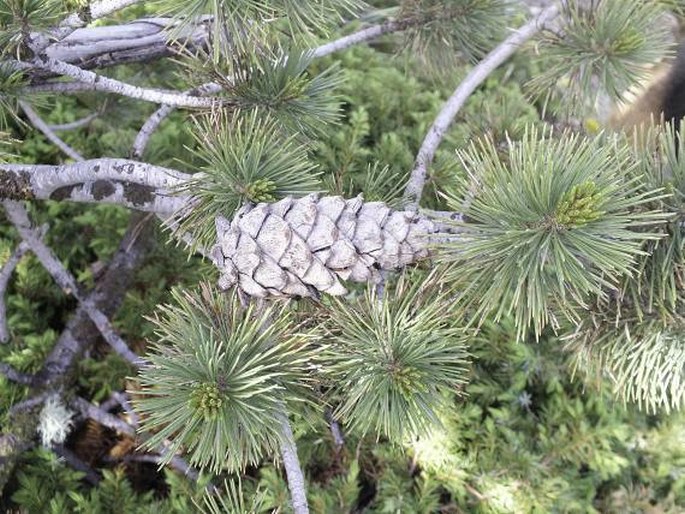
These images were taken in Canada, Alberta, Junction Hill (July 1, 2016).


